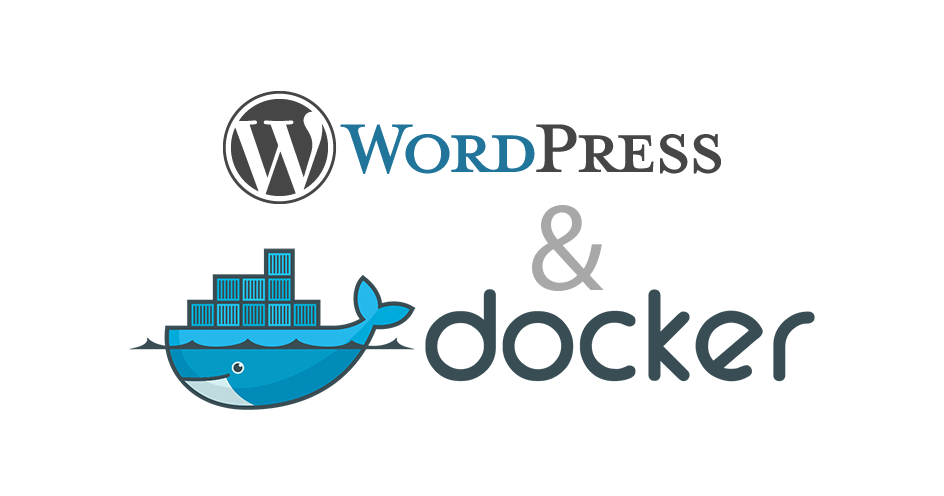Benefits of Wordpress + Docker in a production environment + troubleshooting guide.
So, why Docker?

There are quite a few straightforward reasons why we use Docker with Wordpress, namely:
- Docker reduces clutter.
- We can run a couple of Rails applications and WordPress instances on the same server.
- It helps with version conflict management in Rails apps.
- It allows for the duplication of a production server into staging for testing purposes.
We can “dockerize” an application, run it in our laptops, run tests and then deploy with confidence that it will work. If you are new to Docker, you should read What is Docker and Dockerizing applications. So, the plan is to apply this process to our application. However, I found some issues while building the instances. I would like to share those issues and how I managed to solve them.
Creating a WordPress instance
There are multiple instances ready to use on the Docker hub.Try a simple search. I first tried this instance but didn't like the lack of documentation, and that I wasn't able to save the uploaded files in a persistent volume. Then I tried this other one but wasn't able to modify wp-config.php without some hacking. So, I built my own WordPress image instead.
Dockerfile
This file is responsible for creating the docker instance. You can check the Dockerfile instance here. Let me explain each line, so that it all makes sense.FROM framallo/php-fpmI created a base image php-fpm that allows you to run any PHP application. It is based on `ubuntu:14.04`.ENV DEBIAN_FRONTEND=noninteractive.
RUN apt-get update
RUN apt-get install -y curl mysql-client
RUN rm -rf /var/lib/apt/lists/*The first line is to avoid mysql to ask for a root user and password. Then I updated the apt-cache and install curl and mysql client. Last, I removed the apt-cache to reduce the instance size.ENV wordpress_VERSION 4.1.1
ENV wordpress_UPSTREAM_VERSION 4.1.1
ENV wordpress_SHA1 15d38fe6c73121a20e63ccd8070153b89b2de6a9
ENV DB_NAME wordpress_development
ENV DB_USER root
ENV DB_PASS root
ENV AUTH_KEY --w,=nO-t>g:EOH>e-ZXs!7x(: W4:}1A2$E?Sn9P>TW-[=:u[nc-eQ<vIi<6|wh
ENV SECURE_AUTH_KEY PlM~WQ/9-~V:-3&be`nxuaghz@JyN!]SzVr_]lAM2b?QH(d(|`.z_;1jIE4kY&f+
ENV LOGGED_IN_KEY K]6*uCb-m~>zj5C1krtu:>2VT(WlI/Jl5T~Pov2-`r+Zb5s3i6&aIN$*/+k/~sLN
ENV NONCE_KEY ~; xvP`h^{Pl9zaD#/!f@M21BAk0#sKg>*P+=1LV+FY+;HNE)%Y`4(Xq|&})fCj^
ENV AUTH_SALT A2|G[jvSLB+z dy S/ S>(lLyzxDvJ8(ps1(F%~x]eRD`UHv(h*IDjye+SYV-a;O
ENV SECURE_AUTH_SALT 9cv/Hy~a;qr]4)i*udy-/$non@_:CU0SIdm-L[WH^k_}s:Jq[)HV,Wu8na<_;ef3
ENV LOGGED_IN_SALT {d*4OCrk9x`|cb-4EBK7=ewJ3D]y%z,7mSEd:8?=eP![zD.O`<Uubt-u%@TA+x T
ENV NONCE_SALT z6G5thFC]JIW]|ZQIBgZ?zBb^!N#3-Un=)`!Xb/,Yd8[2&}.W{ITu?=PE0oZ,<8^
ENV WP_RELOCATE trueThese are environment variables that you can change when you run the instance. I think is important to provide with sensible defaults that allow you to quickly test the instance without much thought.RUN rm /var/www/index.php
The base image php-fpm has an index.php file that allows you to test it out. I removed it to provide WordPress a clean folder.RUN curl -o wordpress.tar.gz -SL https://wordpress.org/wordpress-${wordpress_UPSTREAM_VERSION}.tar.gz \
&& echo "$wordpress_SHA1 *wordpress.tar.gz" | sha1sum -c - \
&& tar -xzf wordpress.tar.gz -C /var/ \
&& rm wordpress.tar.gzThis actually installs WordPress. It’s designed to be in one line so that Docker can cache it completelyRUN cp -r /var/wordpress/* /var/www
Then I copy WordPress to the correct folder.ADD wp-config.template.php /var/www/wp-config.template.php
I copy a template to generate wp-config.php. When the instance starts I run the 40_parse_wordpress_config.sh init script. I use bash to render the template using ENV variables. For instance, `${DB_NAME}` will be converted to *wordpress_development*. I found the template parser script here.The issue is that PHP doesn't inherit the environment variables, so I had to modify wp-config.php in order to set all the variables that the application needs.RUN chown -R www-data:www-data /var/www
RUN chmod 755 -R /var/www/I prepare the files to be accessible by nginx and PHPVOLUME /var/www
This line allows you to create persistent storage for the uploaded files and other application changes.ADD *.sh /
RUN chmod +x /*.shThese lines prepare the init scripts. I add them and set as executable scripts.CMD for f in /*.sh; do $f ; done
When the instance starts it will run each init script. The last one is 50_init.sh from php-fpm which runs nginx and php-fpm. All the previous scripts should execute and stop to allow the init process to work.
Docker compose
Previously known as fig, Docker's Compose allows you to run multiple Docker instances together. Since WordPress requires a database instance, I created a docker-compose.yml file.WordPress:
build: .
# image: framallo/php-fpm
links:
- db:mysql
ports:
- 8080:80
environment:
DB_NAME: WordPress_development
DB_USER: root
DB_PASS: 12345AbcThe “build” attribute is the Dockerfile folder. “Links” allows you to connect it with mysql. “Ports” refers to the exposed ports. The format is <host port>:<instance port>. “Environment” allows you to setup the instancedb:
image: mariadb
environment:
MYSQL_ROOT_PASSWORD: 12345AbcThis is to run the database. The password in `MYSQL_ROOT_PASSWORD` should be the same as `DB_PASS`
Creating a data volume
In order to run it in production, you need to save the uploaded files. You can use a data volume for that.In docker-compose.yml you need to add the following:volumes_from:
- wordpressdataAnd add another image to docker-compose.yml:wordpressdata:
image: framallo/wordpress
volumes:
- /var/www
command: echo 'wordpress data initialized'So every file that is uploaded or modified will be saved in the `wordpressdata` image.Just be careful when you are cleaning up docker and removing old images because you could delete `wordpressdata`.
Another nginx instance.
If you run the example docker-compose.yml it will work. However, WordPress will be connected to port 80 and we won't be able to run another instance. We need to add another nginx to act as a reverse proxy.I added the following lines to docker-compose.yml:proxy:
image: framallo/nginx
links:
- wordpress
ports:
- 80:80
volumes:
- sites:/etc/nginx/sites-template
environment:
VERBOSE_TEMPLATES: trueAnd removed the ports attribute in WordPress. Now the proxy connects to WordPress using the env variables and can expose multiple applications.Here's where we end for now. In conclusion, after having solved the minor issues mentioned above, we found Docker to be a very useful and efficient tool to manage distributed applications. Give it it a try when you can. Let me know if you have any questions about how our instance works, or check out our documentation here.Thanks for reading!F.
